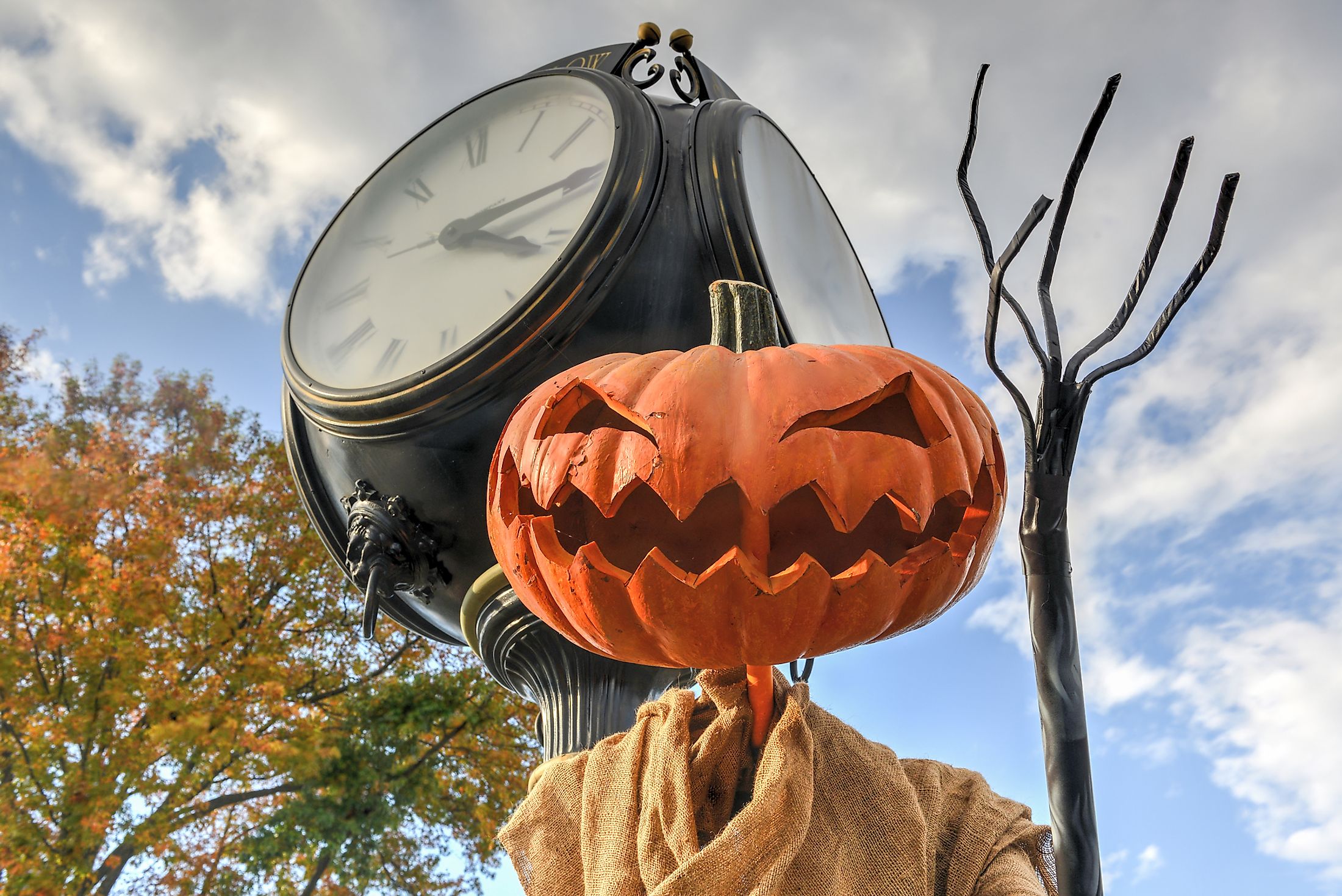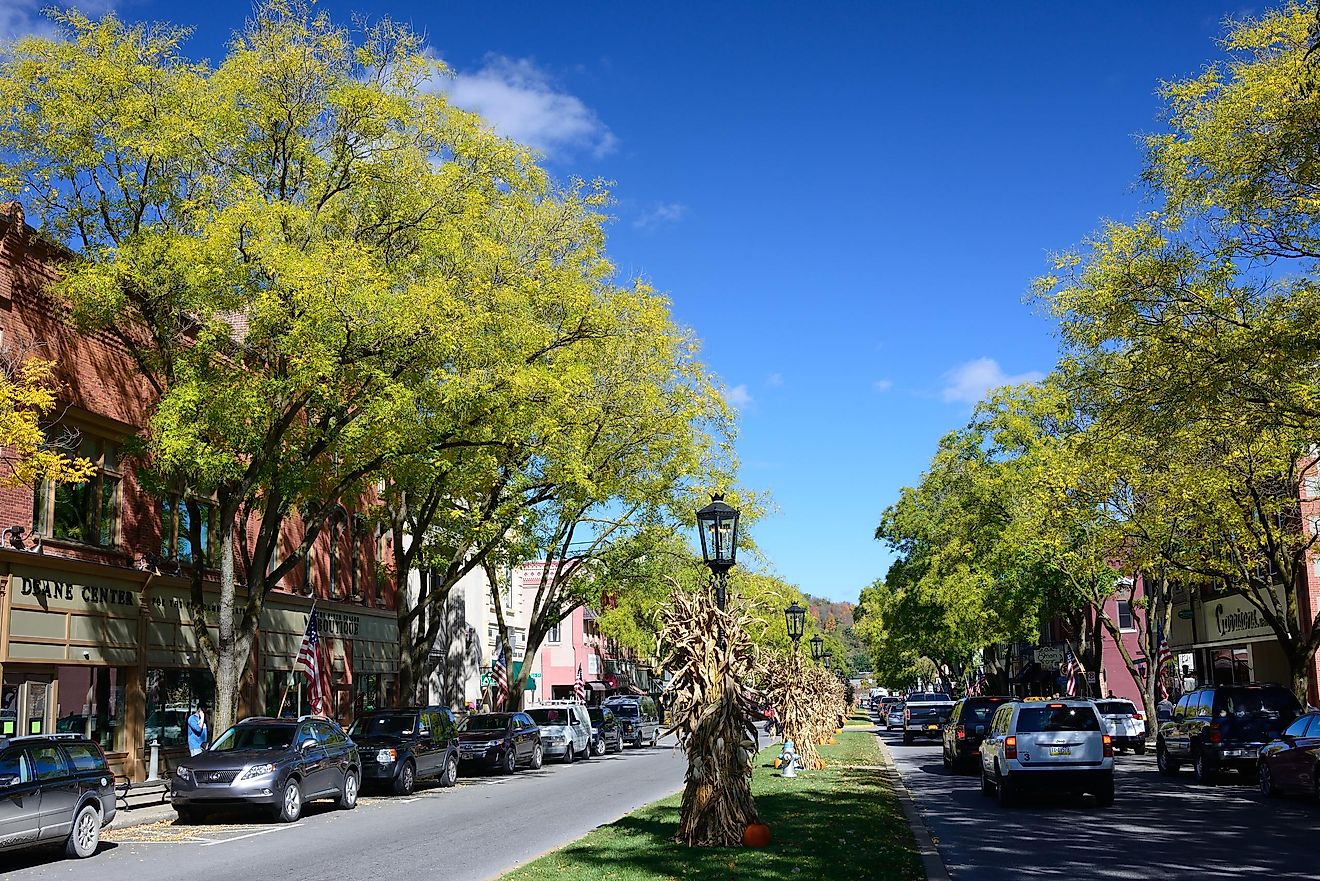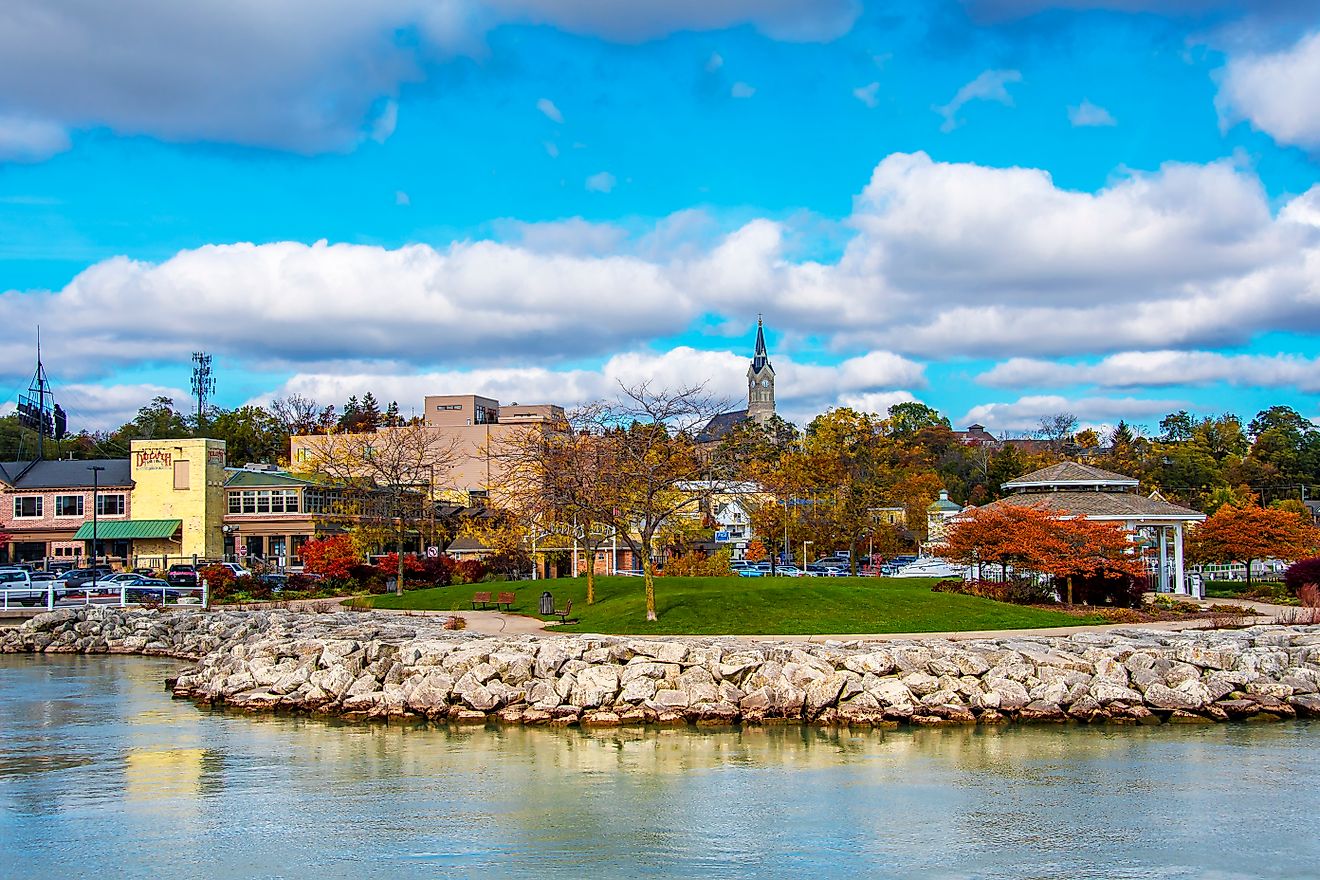
Sleepy Hollow, New York
Sleepy Hollow is a small town located in the state of New York. It is best known for its connection to the famous work entitled The Legend of Sleepy Hollow. Thus, it is popular with tourists, especially around Halloween. The history of Sleepy Hollow dates back to the time when New York was still a Dutch colony called New Netherland, before the English took it over. The town expanded significantly from the mid-19th century, and became a hub for the automobile industry by the early 20th century. Although Sleepy Hollow’s days as an automotive industry town are long gone, the town has been able to capitalize on its history as the home of one of America’s famous ghost legends.
Geography
Sleepy Hollow is located in the southeast of the state of New York, about 40 km north of New York City. It is considered part of the larger town of Mt. Pleasant, which is situated on the east bank of the Hudson River. To the north of Sleepy Hollow is the small hamlet of Archville. Another small hamlet, Pocantico Hills, lies to the east. Both of these hamlets are also within the city limits of Mt. Pleasant, as is Rockefeller State Park Preserve, located to Sleep Hollow’s northeast. South of Sleepy Hollow is Tarrytown, which is not part of Mt. Pleasant. According to the US Census Bureau, the total area of Sleepy Hollow is an estimated 13 sq. km.
Population Of Sleepy Hollow

The population of Sleepy Hollow is now estimated to be 10,000. About 59% of this population is classified as white, while around 32% are of Hispanic origin. More than 4% of the population are said to be of two or more races. African Americans make up about 2.7% of Sleepy Hollow’s population, and Asians make up a little over 1.5%. About 37% of Sleepy Hollow residents were born outside of the United States, with the largest group of them coming from Latin America.
Economy
The largest industry in Sleepy Hollow is healthcare and social assistance. One of the region’s leading hospitals, Northwell Health’s Phelps Memorial Hospital Center, is located in the town. Educational services is the second largest industry in Sleepy Hollow, followed by other services, excluding public administration.
History Of Sleep Hollow
Prior to European settlement, the land on which Sleepy Hollow is now situated was part of the territory of the indigenous Weckquaesgecks. The Dutch were the first Europeans in the area, though the exact time that Europeans began to settle in what is now Sleepy Hollow is unknown. In 1655, a Dutch colonist named Adriaen Van der Donck published a work about what he called Slapershaven, which translates as Sleepers’ Haven. The name Sleepy Hollow is thought to be an Anglicized version of the original Dutch name.

In 1664, the English seized the Dutch colony of New Netherland and renamed it New York. During this period, a Dutchman named Frederick Philipse bought vast tracts of land along both banks of the Hudson River. Among his land purchases was the so-called Pocantico Purchase, which included nearly all of what is now the town of Sleepy Hollow. By around 1685, Philipse had built a mill, manor house, and church on the lower reaches of the Pontico River. In time, this area would become a community known as Upper Mills, which, along with some small farms, occupied the area of what is now Sleepy Hollow. In the early 1700s, Sleepy Hollow became the focus of attention for people who frequented the Old Dutch Church, which was built in 1697. The mill in the village also attracted people during harvest time.
In the 1790s, Sleepy Hollow was visited by two men named Washington Irving and James K. Paulding. Irving’s account of his visit in the area served as the inspiration for his famous work entitled The Legend of Sleepy Hollow. In the early 19th century, Sleepy Hollow’s neighbor, Tarrytown, became a center of industrial activity, while Sleepy Hollow itself remained an agrarian village. This would change by the 1840s, however, when the first aqueduct in the area was built, along with the railroad on the riverside coast. Plans were soon drawn up for what is now Sleepy Hollow’s business district. Industrial mills began appearing along the Pontico River, attracting many new immigrants to the town. In the late 19th century, the village of Sleepy Hollow was incorporated under the name North Tarrytown.

Sleepy Hollow expanded rapidly during the 20th century. In 1900, an automobile factory was built on the village’s waterfront. The automobile industry in Sleepy Hollow would attract many more new residents before its decline in the 1970s. In 1996, the General Motors plant in the town closed its doors for good. In that same year, the town’s residents voted to change its name from North Tarrytown to Sleepy Hollow in order to reconnect the town with its famous past.
The Legend Of Sleepy Hollow

Washington Irving’s Legend of Sleepy Hollow is a story about a headless horseman that terrorizes the village. This story is considered one of the earliest ghost stories in US history. There are different theories as to how Irving conjured up the idea of the headless horseman. One theory suggests that Irving was inspired by Sir Walter Scott’s work, The Chase, which was a translation of a German poem called The Wild Huntsman, written by Gottfried Burger, and likely based on Norse mythology. The poem tells the story of an evil hunter who is destined to be hunted by the devil and the “dogs of hell” for all eternity for his crimes. Another theory suggests that Irving was inspired by the story of soldier who was decapitated by a cannonball during a battle in the American Revolutionary War, which occurred around Halloween in 1776. Regardless of what inspired Irving’s book, its legacy has survived throughout Sleepy Hollow’s history, and has attracted a lot of tourists. The story has also attracted filmmakers, and many movies have used Sleepy Hollow as a setting, including a film entitled Sleepy Hollow, based on Irving’s original work.
Attractions In Sleepy Hollow

Sleepy Hollow boasts many attractions related to the town’s history. Some of these, including the Edward Harden Mansion, Patriot's Park, Philipse Manor Railroad Station, Sleepy Hollow Cemetery, and the Tarrytown Light, are listed on the National Register of Historic Places. The aforementioned Old Dutch Church of Sleepy Hollow and Philipsburg Manor House are listed as National Historic Landmarks. Other attractions include Kingsland Point Park, Philipse Manor Beach Club, and the Rockefeller State Park Preserve.











